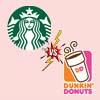Know What The Service Marketing Triangle Is All About

Blog Post
When you run a service-based business like a restaurant, hair salon, or travel agency, the way you communicate your value to customers is different than when you run a product-based business. A service marketing triangle is a marketing framework that includes three key types of marketing to help your audience understand what makes your company unique and relevant to their needs. #TWN
The Services Marketing Triangle (or Services Triangle) depicts the key players in the marketing of a service business. It also depicts the major marketing activities that take place between those actors.
Before we get into the model, it's important to understand that we're only interested in service marketing. The model does not apply to products. We define services based on the following criteria:
- Intangible: You can’t see, taste, or touch them.
- Inseparable: You can’t separate production from consumption.
- Perishable: You can’t save, store, or return them.
- Heterogeneous: Since they are unique, you can’t mass produce them.
Hotel rooms, flights, and health club membership are examples of services.
Promises are used in the marketing of service businesses. These are the promises we make to customers and whether or not we keep them. The Services Marketing Triangle is a strategic visual model. It emphasizes the significance of people in a company's ability to keep promises.
The Services Marketing Triangle
The diagram below depicts the Services Marketing Triangle. It depicts the key marketing activities that take place between the key actors in the services industry.
Each actor collaborates to create, promote, and deliver a company's service. As you can see from the diagram, actors are represented by the triangle's points. Our actors are as follows:
- Company: refers to the company's leadership team.
- Employees: refers to all employees, including subcontractors, who provide services to the company.
- Customers: All current and prospective customers of the company are referred to as customers.
The lines connecting the points represent the various types of marketing that must take place:
- External marketing takes place between a company and its customers.
- Internal marketing takes place between a company and its employees.
- Employees and customers engage in interactive marketing.
External Marketing
External marketing is used by businesses to make promises to customers. External marketing is any communication with customers (or potential customers) that occurs before the start of service delivery.
External marketing can take the following forms:
- Advertising
- Direct marketing
- Personal selling
- Public relations (PR)
We use external marketing to achieve several aims including:
- Creating awareness.
- Setting service level expectations.
- Setting price expectations.
- Informing customers if any prerequisites must be met before they can use the service.
Internal Marketing
Employees are viewed as internal customers in the services industry. They are a market that we must first please as a company. The leadership team should prioritize employee satisfaction so that employees want to serve customers better.
Internal marketing entails motivating employees to work together as a team to satisfy customers. It is unquestionably true for customer service representatives. It is equally applicable to all employees. As a result, everyone at all levels of the organization is empowered to provide excellent customer service.
Key sections of internal marketing include:
- Motivating employees
- Teaching customer satisfaction techniques
- Regularly communicating company goals
- Management of change
- Training staff on how to use the company’s services
- Good pay and working conditions
Interactive Marketing
When employees and customers interact, this is referred to as interactive marketing. It is here that employees or subcontractors either keep or break promises made during external marketing.
A service encounter is any significant interaction between an employee and a customer.
Because it establishes both short-term and long-term satisfaction, interactive marketing is essential. That is, if a customer is pleased with the service they received in the short term, they are more likely to be pleased in the long run.
Services Marketing Triangle Example
To round things out, consider a simple example: a luxury hotel.
Let's start with external marketing. Advertising and public relations may be used by a luxury hotel to educate customers. Customers will want to know that their rooms have the highest quality fixtures, fittings, and toiletries. They are also likely to want to convey that their staff is knowledgeable and eager to assist with any requests a customer may have.
The company focuses on internal marketing to deliver on these promises. It creates more concierge positions within hotels than the industry average. It helps to ensure that employees believe they have enough time to help each customer to the best of their abilities. Employees are also educated about the surrounding area, local activities, and excursions. Every employee is also taught how to deal with and diffuse difficult guests and situations.
The hotel handles interactive marketing in the following ways. They hire someone to manage their online presence and reputation.
Assume that a guest tweeted that they are in their room, getting ready for a crucial meeting the next day. The person in charge of the hotel's social media presence would notice this. The hotel may then leave a handwritten note and chocolates in the guest's room while they are at their meeting.
The note will express gratitude for how well their meeting went. They will feel cared for and heard thanks to the chocolates. In the short term, this makes the customer feel valued. It also increases their chances of remaining a customer in the long run.
Also Read: Relationship Marketing - An Important Tool for Success
Conclusion
A strategic marketing model is the Services Marketing Triangle. It provides a visual representation of the importance of people in the services industry.
The model is based on the idea that all service businesses revolve around making promises. Through external marketing, the company makes promises to its customers. Internal marketing assists the company's employees in keeping their promises. Finally, through interactive marketing, the company fulfills its promises.
Related Blogs
You May Like
EDITOR’S CHOICE














